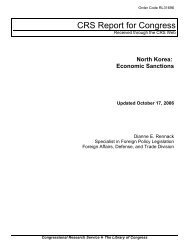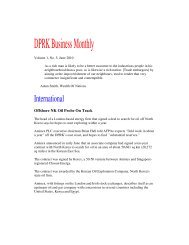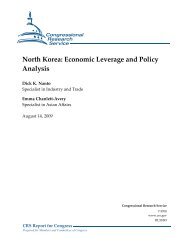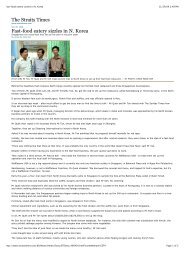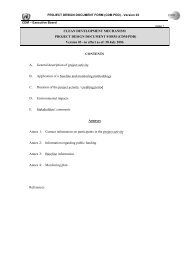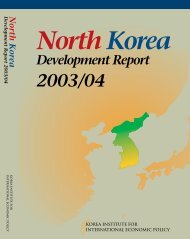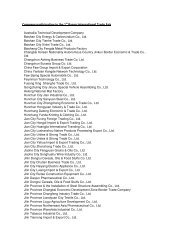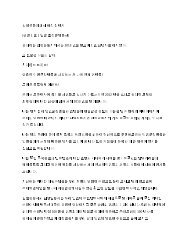North Korean Policy Elites - Defense Technical Information Center
North Korean Policy Elites - Defense Technical Information Center
North Korean Policy Elites - Defense Technical Information Center
You also want an ePaper? Increase the reach of your titles
YUMPU automatically turns print PDFs into web optimized ePapers that Google loves.
EXECUTIVE SUMMARY<br />
This study offers findings of on-going research and analysis of the <strong>North</strong> <strong>Korean</strong><br />
leadership. It provides the reader with a theory on the how the <strong>North</strong> <strong>Korean</strong> system operates. It<br />
discusses the potential for factions among the senior leadership, their interaction with Kim<br />
Chong-il, and strategies for maintaining regime stability. The paper also examines the sources of<br />
information available to the elite, both in terms of internal and external communications, and<br />
efforts to monitor and control access to such information. An effort is also made to describe the<br />
lens through which the leadership receives, assimilates, and interprets information. The paper is<br />
based in large measure on extensive interviews, conducted by the author over the past decade<br />
with a number of <strong>North</strong> <strong>Korean</strong> defectors and “Pyongyang watchers,” including former Russian<br />
and Chinese diplomats who have served in <strong>North</strong> Korea, former South <strong>Korean</strong> officials,<br />
journalists, and academics. 1<br />
A. KEY FINDINGS<br />
The Technology of Power<br />
Since its inception, the <strong>North</strong> <strong>Korean</strong> regime has contained strains of indirection and<br />
informal channels of authority, which at the same time support and weaken formal regime<br />
structures. Like most totalitarian regimes, <strong>North</strong> Korea has both a formal political structure and<br />
an informal one. Traditionally, the formal structure of power has been composed of the party and<br />
state apparatuses. The institutions of both the party and state are essentially creations of Kim<br />
Chong-il (and his father) and are designed not to limit the Suryong’s (Leader’s) power, but to<br />
limit that of his subordinates and potential rivals and to facilitate the consolidation of his own<br />
authority. Conflicting lines of authority between party and state provide an ad hoc system of<br />
crosschecks and balances.<br />
The informal leadership, which includes Kim Chong-il’s apparatus, controls real power<br />
by virtue of its proximity to Kim and its controls over the flow of information. This Praetorian<br />
Guard is linked to the Great Leader either by blood ties or bonds developed over decades of<br />
service to the Kim family. It is this group of loyal servants that Kim relies on to enforce order<br />
throughout the system and provide key advice in the decision-making process.<br />
1 The author would like to thank Jee Sun Lee, his research assistant, who assisted him with <strong>Korean</strong> language sources.<br />
Her contribution to this study was invaluable.<br />
II-S-1



